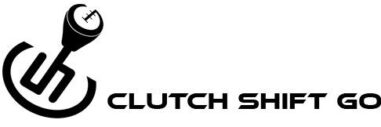Turbos come in all different sizes, styles, and with different flanges for your different setups. Whether it be oil cooled, water (or coolant) cooled, or even both they are all designed to do the same thing, and that is to provide boost.
But, how do they do such a thing? Well first you have to know how an engine works. Your engine in a nutshell sucks in air to be mixed with fuel and ignites the mixture causing the explosion to force your pistons down, Which then turns your crank. Now if you add more air, More fuel and bigger spark you can gain more horsepower. Turbos like the Garrett Turbo for example do this by forcing air into the engine.

A turbocharger has two sides, one being the inlet/compressor side and the other being the exhaust/hot side. Connected to both the inlet and the exhaust side is a shaft with two turbine wheels that rotate, A Garrett Turbo can spin very fast up to about 240,000 rpm’s. This speed creates a lot heat and needs to be cooled, A Garrett Turbo can use either oil or coolant to cool the turbo. Some turbo’s just use oil to cool and lubricate the bearings while others use both oil and coolant. As the engine turns, The exhaust gases go into the exhaust side of the turbo which spins it causing the inlet side to suck in air, The air is then compressed and sent through an Intercooler to cool the compressed air and then is sent to the engine, Since the air is compressed it is sucking in more air than a naturally aspirated vehicle would.

Turbochargers need a couple of supporting components to work properly and to make sure you engine is protected by over boosting. For example excess exhaust gases from the hot side of the turbo are released through a Wastegate, either internal or external on the turbocharger. on the cold side of the turbocharger, The compressed air will pass through an Intercooler, Which acts like a radiator to cool down the air before going into the engine. The excess boost pressure on the inlet side of the turbocharger will go through a Blow off valve, Which is a valve that releases the left over air psi into the atmosphere so it doesn’t over boost your engine and breaking parts.
There are many benefits to having a turbocharger on your vehicle.
- A smaller turbo can provide more low rpm power in some vehicles (A lot of box trucks using turbos on the diesel engines for this reason)
- Turbochargers are exhaust driven rather than belt driven like superchargers. This means there is less strain on the motor.
- Engines equipped with turbochargers use less fuel than naturally aspirated engines.
- You can produce more power with a smaller engine, which means, better fuel economy and less pollution.
All in all a vehicle equipped with a turbocharger and the right supporting mods can give you a bunch of horsepower and better fuel economy in a smaller engine. Bigger engines with turbo’s also benefit from this as well, A bigger engine like a V8 will benefit in the same way as a smaller engine would.


